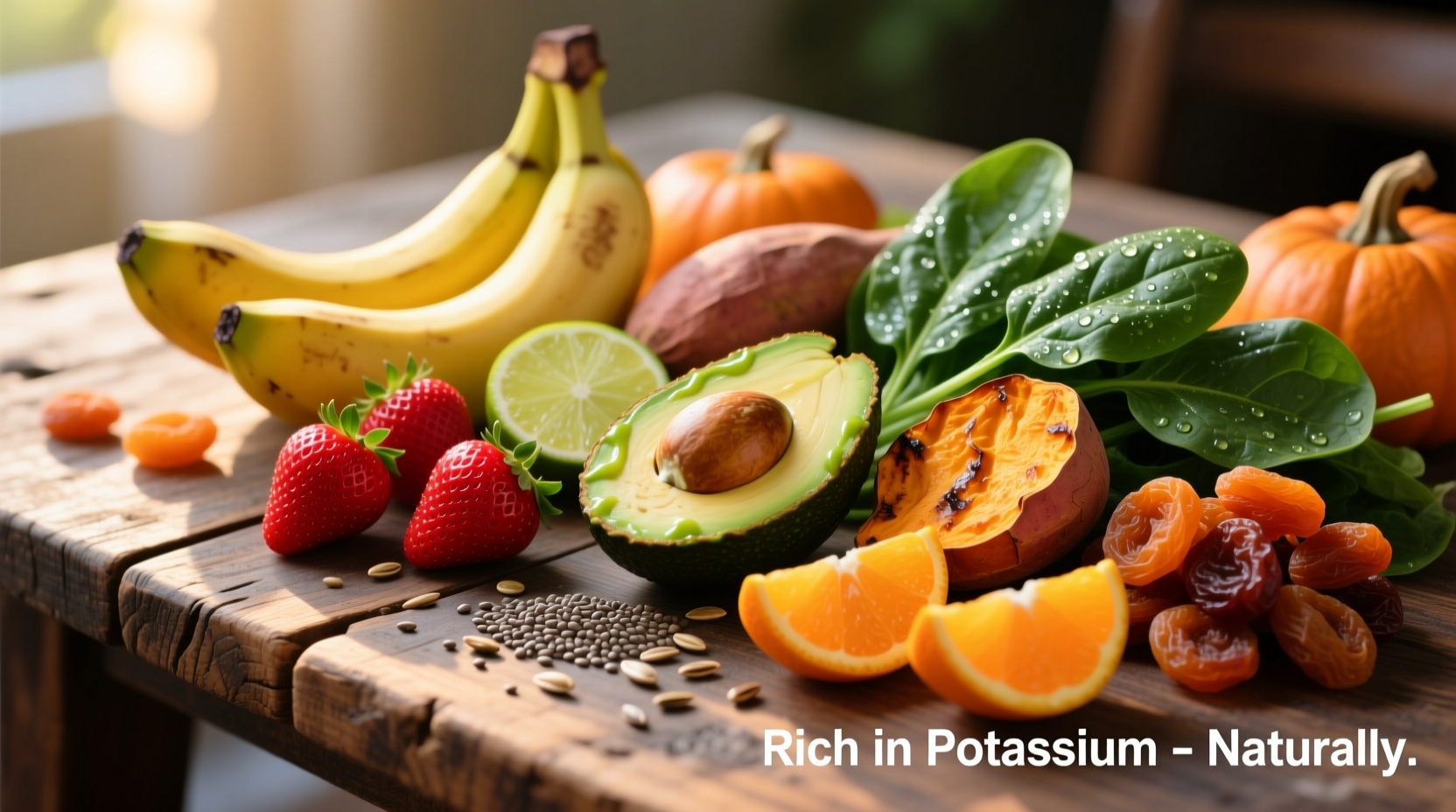Discover the most potent natural sources of potassium to support your heart health, muscle function, and overall wellbeing. This comprehensive guide reveals exactly which foods deliver the highest potassium content per serving, backed by verified nutritional data from authoritative sources.
Why Potassium Matters for Your Health
Potassium serves as a crucial electrolyte that helps maintain fluid balance, nerve signals, and muscle contractions. The National Institutes of Health recommends adults consume 2,600-3,400mg daily to reduce blood pressure, decrease stroke risk, and support kidney function. Most Americans fall significantly short of this target, with only about 3% meeting daily requirements according to CDC data.
Top Potassium Powerhouses by Food Category
Fruits That Pack a Potassium Punch
While bananas often steal the spotlight, several fruits deliver even higher potassium concentrations. One cup of dried apricots provides a remarkable 1,511mg—more than four times the amount in a medium banana. Other potassium-rich fruits include:
- Avocados (708mg per half)
- Oranges (496mg per large fruit)
- Cantaloupe (473mg per 1/4 medium melon)
- Bananas (422mg per medium)
- 100% orange juice (496mg per cup)
Vegetables with Exceptional Potassium Levels
Vegetables dominate the potassium leaderboard, with several options delivering more than 20% of your daily needs in a single serving. Sweet potatoes stand out with 542mg per medium potato, but these vegetables offer even more impressive concentrations:
| Food | Serving Size | Potassium (mg) | % Daily Value |
|---|---|---|---|
| White beans | 1 cup cooked | 1,189 | 34% |
| Spinach | 1 cup cooked | 839 | 24% |
| Salmon | 3 oz cooked | 534 | 15% |
| Sweet potato | 1 medium | 542 | 16% |
| Acorn squash | 1 cup cooked | 896 | 26% |
| Mushrooms | 1 cup sliced | 305 | 9% |
This comparison draws from USDA FoodData Central (accessed September 2025), the most current nutritional database maintained by the U.S. Department of Agriculture. The values reflect standard preparation methods and typical serving sizes consumed by Americans.
Protein Sources Rich in Potassium
Many protein sources deliver substantial potassium alongside essential amino acids. Wild-caught salmon provides 534mg per 3-ounce serving, while a cup of cooked white beans delivers an impressive 1,189mg—more than one-third of your daily requirement. Other excellent protein options include:
- Lentils (731mg per cup cooked)
- Chickpeas (477mg per cup cooked)
- Lean beef (343mg per 3 oz)
- Tofu (271mg per ½ cup)
Practical Ways to Boost Your Potassium Intake
Incorporating potassium-rich foods into your daily routine doesn't require drastic changes. Start your day with a spinach and banana smoothie (750mg potassium), swap regular potatoes for sweet potatoes as a side dish, and snack on dried apricots instead of processed crackers. When cooking, use potassium-rich ingredients as bases for soups and stews—white beans and tomatoes create a nutrient-dense foundation.
For those managing kidney conditions, consult your healthcare provider before significantly increasing potassium intake. The National Kidney Foundation notes that individuals with chronic kidney disease often require potassium restriction, as impaired kidneys cannot effectively remove excess potassium from the bloodstream.
Maximizing Potassium Absorption
Cooking methods impact potassium retention in foods. Boiling vegetables like spinach can leach up to 50% of their potassium into the water, while steaming preserves more nutrients. When preparing potatoes, leaving the skin on maintains higher potassium levels—baking with skin intact preserves more nutrients than boiling peeled potatoes.

Common Misconceptions About Potassium Foods
Many believe bananas reign supreme as the ultimate potassium source, but numerous foods contain significantly higher concentrations. A medium avocado delivers 708mg potassium compared to a banana's 422mg, while a cup of cooked spinach provides nearly double the amount. Processed foods rarely serve as reliable potassium sources, as processing often removes this water-soluble nutrient.
Tracking Your Potassium Consumption
Use food tracking apps that reference the USDA database to monitor your daily potassium intake. Aim for consistent consumption throughout the day rather than large doses at single meals. Pair potassium-rich foods with magnesium sources like nuts and seeds to enhance absorption and utilization within the body.











 浙公网安备
33010002000092号
浙公网安备
33010002000092号 浙B2-20120091-4
浙B2-20120091-4